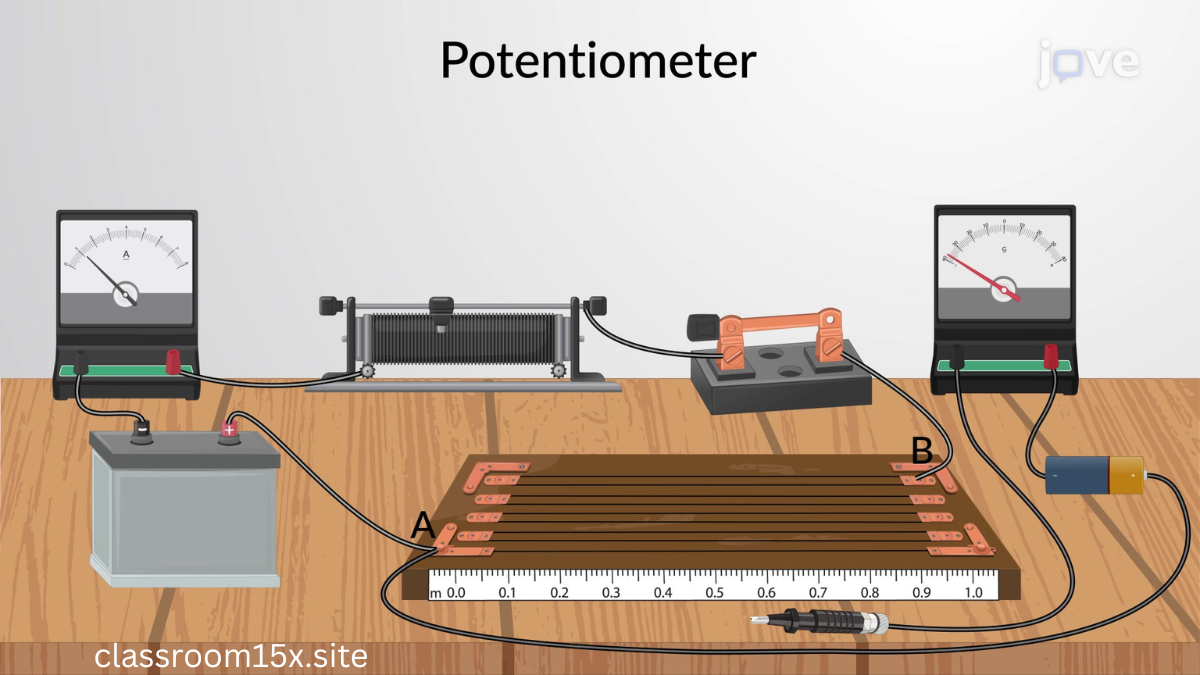Introduction
A potentiometer is a versatile and widely used electronic component that plays a critical role in controlling electrical signals in countless devices. At its core, a potentiometer is a type of variable resistor, allowing users to adjust resistance and, consequently, the voltage in a circuit. This simple yet effective component has become essential in both everyday electronics and advanced industrial systems. Whether you’re adjusting the volume on your stereo, calibrating sensors in an automotive system, or experimenting with Arduino projects, the potentiometer is a crucial tool.
Understanding is not only important for electronics enthusiasts but also for engineers, students, and hobbyists who want to design or troubleshoot circuits. In this article, we will explore what a potentiometer is, the different types available, how it works, its practical applications, and tips on choosing and maintaining them. By the end, you will have a solid grasp of and their vital role in modern electronics.
What is a Potentiometer?
A potentiometer, often shortened to “pot,” is essentially a three-terminal resistor with an adjustable sliding or rotating contact that forms an adjustable voltage divider. The key feature of a is its ability to vary resistance manually, making it ideal for tuning or controlling electrical parameters such as voltage or current. The core concept is straightforward — by moving the wiper along a resistive track, the resistance between the terminals changes, allowing control over the output voltage.
Potentiometers have been around for over a century, dating back to early electrical experiments and innovations. Their design typically consists of a resistive element—often made from carbon, cermet, or wire-wound materials—and a wiper connected to a rotating or sliding shaft. As the shaft moves, it changes the contact point on the resistive element, thereby varying resistance.
This adjustability is what makes so valuable. Unlike fixed resistors, which have a set resistance, potentiometers provide a continuous range of resistance values within their specified limits. This feature enables fine-tuning in circuits and precise control over electrical output, making them indispensable in many applications.
Types of Potentiometers
Potentiometers come in several types, each suited to different uses based on their mechanical design and electrical characteristics. The most common type is the rotary potentiometer, which uses a circular resistive track and a rotating shaft. These are often found in volume knobs on audio devices or as user-adjustable controls in various electronics. Rotary potentiometers are easy to use and provide a smooth, continuous adjustment of resistance over a 270-degree or full 360-degree rotation.
Another popular variety is the linear potentiometer, also known as a slide. Instead of rotating, the wiper slides along a straight resistive track. This type is frequently used in audio mixing boards, lighting controls, and other applications where a linear adjustment is more intuitive or space-efficient.
In addition to analog potentiometers, there are digital potentiometers—electronic components controlled by digital signals rather than mechanical movement. These use integrated circuits to mimic the variable resistance function and are commonly used in programmable devices or microcontroller systems where software control of resistance is needed.
Other specialized types include trimmer , which are small, adjustable resistors used primarily for calibration during manufacturing or repair, and multi-turn , which allow more precise adjustments by requiring multiple turns of the shaft to cover the full resistance range.
How Potentiometers Work
At the heart of a potentiometer’s function is the principle of voltage division. The device has three terminals: two connected to the ends of a resistive element and one connected to a movable wiper. When voltage is applied across the resistive element, the wiper picks off a voltage somewhere between the two ends depending on its position.
The resistance between the wiper and each end changes as the wiper moves, altering the output voltage relative to the input. This is why are often called voltage dividers—they divide the voltage into adjustable proportions. The output voltage at the wiper is directly proportional to the position of the wiper along the resistive element.
This simple yet powerful mechanism is the foundation of many control applications. For example, turning the volume knob on a radio changes the resistance, thereby controlling the audio signal’s amplitude. Similarly, in a sensor circuit, a potentiometer can adjust sensitivity or calibrate readings by fine-tuning voltage levels.
Understanding the electrical relationships in a potentiometer helps in designing circuits that utilize it effectively. Equations involving Ohm’s law and voltage division principle describe how the output voltage changes in response to the wiper position, giving engineers precise control over circuit behavior.
Applications of Potentiometers
Potentiometers find applications in a vast range of fields due to their simple design and effective control capabilities. One of the most common consumer uses is in electronics such as audio equipment, where potentiometers adjust volume, tone, or balance. They also control brightness in lighting systems, allowing users to dim or brighten lights smoothly.
In the automotive industry, serve as critical sensors. For example, throttle position sensors use potentiometers to monitor how much the gas pedal is pressed, sending that information to the engine control unit (ECU) to regulate fuel injection and engine response accurately.
Industrial automation relies heavily on for position sensing and feedback systems. They provide adjustable control for machinery, helping to calibrate mechanical movements or monitor valve positions. Their robustness and reliability make them ideal for harsh industrial environments.
In the world of DIY electronics and prototyping, are indispensable. Hobbyists and engineers use them to experiment with sensor inputs and output control in Arduino or Raspberry Pi projects, providing a tactile interface for adjustments.
Additionally, potentiometers are found in medical devices where precise adjustments are necessary, such as in diagnostic equipment or patient monitors, showcasing their versatility across disciplines.
Conclusion
Potentiometers are fundamental components that enable precise control over electrical signals in a wide array of applications. Their simple design belies their importance—from everyday gadgets to complex industrial machinery. Understanding how potentiometers work, their various types, and how to select and maintain them can empower anyone working with electronics to harness their full potential.
Whether you are a beginner experimenting with electronic projects or a professional engineer designing complex control systems, mastering the principles is invaluable. With this knowledge, you can confidently implement, troubleshoot, and innovate with one of the most essential components in electronics.
Also Read: tennessee tech baseball




